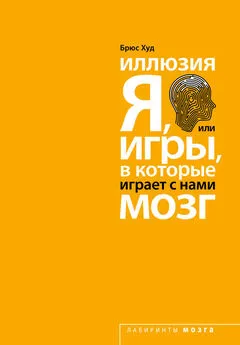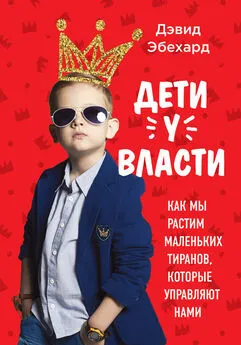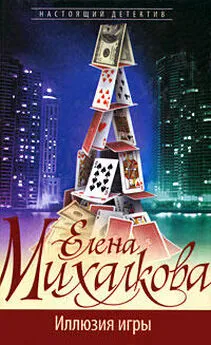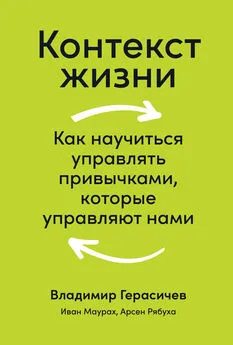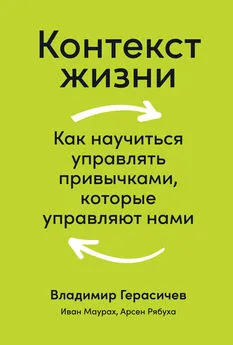Брюс Худ - Иллюзия «Я», или Игры, в которые играет с нами мозг
- Название:Иллюзия «Я», или Игры, в которые играет с нами мозг
- Автор:
- Жанр:
- Издательство:Эксмо
- Год:2015
- Город:Москва
- ISBN:978-5-699-79277-1
- Рейтинг:
- Избранное:Добавить в избранное
-
Отзывы:
-
Ваша оценка:
Брюс Худ - Иллюзия «Я», или Игры, в которые играет с нами мозг краткое содержание
Иллюзия «Я», или Игры, в которые играет с нами мозг - читать онлайн бесплатно полную версию (весь текст целиком)
Интервал:
Закладка:
134
P.E. Jones, «Contradictions and unanswered questions in the Genie case: A fresh look at the linguistic evidence», Language and Communication, 15 (1995), 261–80.
135
U. Firth, Autism: Explaining the Enigma (2nd ed., Oxford: Wiley-Blackwell, 2003).
136
Alvin Powell, interview with Chuck Nelson, «Breathtakingly awful», Harvard Gazette (5 October 2010).
137
D.E. Johnson, D. Guthrie, A.T. Smyke, S.F. Koga, N.A. Fox, C.H. Zeanah and C.A. Nelson, «Growth and associations between auxology, caregiving environment, and cognition in socially deprived Romanian children randomized to foster vs ongoing institutional care», Archives of Pediatrics and Adolescent Medicine, 164 (2010), 507–516.
138
M. Rutter, T.G. O'Connor and the English and Romanian Adoptees (ERA) Study Team, «Are there biological programming effects for psychological development? Findings from a study of Romanian adoptees», Developmental Psychology, 40 (2004), 81–94.
139
H.F. Harlow and M.L. Harlow, «The affectional systems», in A.M. Schrier, H.F. Harlow and F. Stollnitz (eds), Behavior of Nonhuman Primates, vol. 2 (New York, NY: Academic Press, 1965).
140
T. Field, M. Hernandez-Reif and J. Freedman, «Stimulation programs for preterm infants», Social Policy Report, 18 (2004), 1–19.
141
D.O. Hebb, «The effects of early experience on problem solving at maturity», American Psychologist, 2 (1947), 306–7.
142
J.T. Cacioppo, J.H. Fowler and N.A. Christakis, «Alone in the crowd: The structure and spread of loneliness in a large social network», Journal of Personality and Social Psychology, 97 (2009), 977–91.
143
H. Ruan and C.F. Wu, «Social interaction-mediated lifespan extension of Drosophila Cu/Zn superoxide dismutase mutants», Proceedings of the National Academy of Sciences of the United States of America, 105: 21 (2008), 7506–10.
144
R.S. Kempe and C.H. Kempe, Child Abuse (Cambridge, MA: Harvard University Press, 1978).
145
D.G. Dutton and S. Painter, «Emotional attachments in abusive relationships. A test of traumatic bonding», Violence and Victims, 8 (1993), 105–120.
146
G.A. Morgan and H.N. Ricciuti, «Infants» responses to strangers during the first year», in B.M. Foss (ed.), Determinants of Infant Behaviour, vol. 4 (London: Methuen, 1967).
147
A.N. Meltzoff, P.K. Kuhl, J. Movellan and T.J. Sejnowski, «Foundations for a new science of learning», Science, 325 (2009), 284–8.
148
A.N. Meltzoff, «Infant imitation and memory: Nine-month-olds in immediate and deferred tests», Child Development, 59 (1988), 217–25.
149
G. Gergely, H. Bekkering and I. Kirly, «Rational imitation of goal directed actions in preverbal infants», Nature, 415 (2002), 755.
150
A.N. Meltzoff and R. Brooks, «Self-experience as a mechanism for learning about others: A training study in social cognition», Developmental Psychology, 44 (2008), 1257–65.
151
S. Itakura, H. Ishida, T. Kanda, Y. Shimada, H. Ishiguro and K. Lee, «How to build an intentional android: Infants» imitation of a robot's goal-directed actions», Infancy, 13 (2008), 519–32.
152
V. Gallese, L. Fadiga, L. Fogassi and G. Rizzolatti, «Action recognition in the premotor cortex», Brain, 119 (1996), 593–609.
153
V. Gallese, M.A. Gernsbacher, C. Heyes, G. Hickok and M. Iacoboni, «Mirror Neuron Forum», Perspectives on Psychological Science, 6 (2011), 369–407.
154
This claim was made by the eminent neuroscientist Vilayanur Ramachandran and is related in C. Keysers, The Empathic Brain (Los Gatos, CA: Smashwords e-book, 2011).
155
D.T. Neal and T.L. Chartrand, «Embodied emotion perception: Amplifying and dampening facial feedback modulates emotion perception accuracy», Social Psychological and Personality Science (2011): doi: 10.1177/ 1948550611406138.
156
«Бешеный бык» (англ. «Raging Bull») – художественный фильм режиссера Мартина Скорсезе, вышедший на экраны в 1980 году. Снят по мотивам мемуаров известного американского боксера, чемпиона мира среди профессионалов Джейка Ламотты. – Примеч. пер.
157
S.-J. Blakemore, D. Bristow, G. Bird, C. Frith and J. Ward, «Somatosensory activations during the observation of touch and a case of vision-touch synaesthesia», Brain, 128 (2005), 1571–83.
158
J. Ward, The Frog Who Croaked Blue: Synesthesia and the Mixing of the Senses London: Routledge (2008).
159
M.J. Richardson, K.L. Marsh, R.W. Isenhower, J.R.L. Goodman and R.C. Schmidt, «Rocking together: Dynamics of intentional and un‑ intentional interpersonal coordination», Human Movement Science, 26 (2007), 867–91.
160
M.S. Helt, I.-M. Eigsti, P.J. Snyder and D.A. Fein, «Contagious yawning in autistic and typical development», Child Development, 81 (2010), 1620–31.
161
Англ. «Stand by Me» – драма 1986 года, снятая Робом Райнером по повести Стивена Кинга «Тело». Мальчики отправляются на поиски тела погибшего ребенка. Горди – один из этой компании. – Примеч. пер.
162
T.J. Cox, «Scraping sounds and disgusting noises», Applied Acoustics, 69 (2008), 1195–1204.
163
O. Sacks, The Man Who Mistook His Wife for a Hat (New York, NY: Harper Perennial, 1987), 123.
164
Примерно к 25 годам. – Примеч. ред.
165
В этом контексте тиком называют любое повторяющееся неконтролируемое движение или поведение. – Примеч. ред.
166
На русском языке вышел под названием «Образцовый самец». – Примеч. пер.
167
C.H. Cooley, Human Nature and the Social Order (New York, NY: Scribner's, 1902).
168
N. Breen, D. Caine and M. Coltheart, «Mirrored-self misidentification: Two cases of focal onset dementia», Neurocase, 7 (2001), 239–54.
169
J. Cotard, Etudes sur les Maladies Cerebrales et Mentales (Paris: Bailliere, 1891).
170
E.C.M. Hunter, M. Sierra and A.S. David, «The epidemiology of depersonalisation and derealisation: A systematic review, Social Psychiatry Psychiatric Epidemiology, 39 (2004), 9–18.
171
A.J. Barnier, R.E. Cox, M. Connors, R. Langdon and M. Coltheart, «A stranger in the looking glass: Developing and challenging a hypnotic mirrored-self misidentification delusion», International Journal of Clinical and Experimental Hypnosis, 59 (2011), 1–26.
172
G.B. Caputo, «Strange-face-in-the-mirror illusion», Perception, 39 (2010), 1007–8.
173
G.G. Gallup, «Chimpanzees: Self-recognition», Science, 167 (1970), 86–7.
174
B.I. Bertenthal and K.W. Fischer, «Development of self-recognition in the infant», Developmental Psychology, 14 (1978), 44–50.
175
P. Rochat, Others in Mind: Social Origins of Self-Consciousness (Cambridge: Cambridge University Press, 2009).
176
D. Bruce, A. Dolan and K. Phillips-Grant, «On the transition from childhood amnesia to the recall of personal memories», Psychological Science, 11 (2000), 360–64.
177
M.J. Eacott, «Memory for the events of early childhood», Current Directions in Psychological Sciences, 8 (1999), 46–9.
178
Название книги можно перевести как «Вечное сегодня». – Примеч. пер.
179
D. Wearing, Forever Today: A Memoir of Love and Amnesia (London: Doubleday, 2005).
180
Wearing (2005), 158.
181
J. Piaget, The Child's Construction of Reality (London: Routledge and Kegan Paul, 1955).
182
C. Rovee and D.T. Rovee, «Conjugate reinforcement of infant exploratory behavior», Journal of Experimental Child Psychology, 8 (1969), 33–9.
183
D.B. Mitchell, «Nonconscious priming after 17 years: Invulnerable implicit memory?», Psychological Science, 17 (2006), 925–9.
184
E. Tulving, Elements of Episodic Memory (Oxford: Clarendon Press, 1983).
185
M.A. Conway and C.W. Pleydell-Pearce, «The construction of autobiographical memories in the self-memory system», Psychological Review, 107 (2000), 261–88.
186
H.L. Roediger III and K.B. McDermott, «Tricks of memory», Current Directions in Psychological Science, 9 (2000), 123–7.
187
F.C. Bartlett, Remembering (Cambridge, England: Cambridge University Press, 1932).
188
E.F. Loftus, «Leading questions and eyewitness report», Cognitive Psychology, 7 (1975), 560–72.
189
E.F. Loftus, «Lost in the mall: Misrepresentations and misunderstandings», Ethics and Behaviour, 9 (1999), 51–60.
190
Историю ложных воспоминаний Пиаже можно найти в: C. Tavris, «Hysteria and the incest-survivor machine», Sacramento Bee, Forum section (17 January 1993).
191
K.A. Wade, M. Garry, J.D. Read and D.S. Lindsay, «A picture is worth a thousand lies: Using false photographs to create false childhood memories», Psychonomic Bulletin and Review, 9 (2002), 597–603.
192
Воспоминания Лофтус об этом инциденте взяты из J. Neimark, «The diva of disclosure, memory researcher Elizabeth Loftus», Psychology Today, 29 (1996), 48.
193
D.J. Simons and C.F. Chabris, «What people believe about how memory works: A representative survey of the US population», PLoS ONE, 6:8 (2011): e22757, doi:10.1371/journal.pone.0022757.
194
W.L. Randall, «From compost to computer: Rethinking our metaphors for memory», Theory Psychology, 17 (2007), 611–33.
195
Simons, quoted in K. Harmon, «4 things most people get wrong about memory», Scientific American (4 August 2011), http://blogs.scientificamerican.com/observations/2011/08/04/4-things-most-people-get-wrong-aboutmemory.
Читать дальшеИнтервал:
Закладка:
